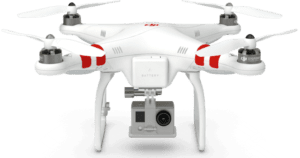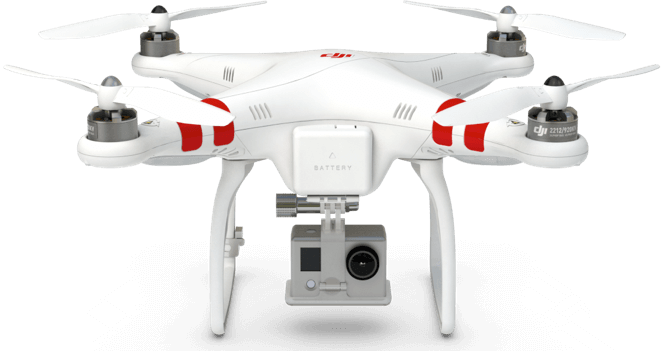Table of Contents
ToggleHow to Make a Drone at Home
- Building a drone at home involves several steps, from gathering materials and components to assembling and configuring the drone.
- The working principle of the drone is shown on the CFD FLow Engineering site and its applications
- Here’s a step-by-step guide to help you build a basic quadcopter drone:4
Buy Parts of Drone
A drone, or Unmanned Aerial Vehicle (UAV), consists of several key components that work together to achieve controlled flight. Here’s an overview of the main parts of a typical drone:
1. Frame
- Material: Often made of lightweight, durable materials such as carbon fiber, plastic, or aluminum.
- Function: Provides the structural foundation for the drone, holding all the components together. The frame typically includes arms for attaching motors and landing gear.
2. Motors
- Type: Brushless DC motors are commonly used due to their efficiency and reliability.
- Function: Spin the propellers to generate lift. The number of motors depends on the type of drone (e.g., quadcopter has four motors).
3. Propellers
- Material: Usually made of plastic or carbon fiber.
- Function: Create lift by moving air downwards. Propellers come in pairs: clockwise (CW) and counterclockwise (CCW) to balance the torque.
4. Electronic Speed Controllers (ESCs)
- Function: Control the speed of the motors by regulating the power from the battery. Each motor typically has its own ESC.
5. Flight Controller
- Function: The brain of the drone, which processes sensor data and pilot inputs to control the motors and stabilize the drone. It includes a microprocessor and various sensors (gyroscope, accelerometer, etc.).
6. Power Distribution Board (PDB)
- Function: Distributes electrical power from the battery to the ESCs and other components.
7. Battery
- Type: Lithium Polymer (LiPo) batteries are commonly used due to their high energy density and lightweight.
- Function: Provides power to all the drone’s components.
8. Transmitter and Receiver
- Function: The transmitter (remote control) sends control signals to the receiver on the drone. The receiver then relays these signals to the flight controller.
9. GPS Module
- Function: Provides the drone with location and navigation data, enabling features like position hold, waypoint navigation, and return-to-home.
10. Camera and Gimbal (Optional)
- Camera: Used for capturing photos and videos.
- Gimbal: A stabilization system that keeps the camera steady during flight, allowing for smooth and stable footage.
11. Sensors
- Gyroscope: Measures the rate of rotation and helps with stabilization.
- Accelerometer: Measures acceleration forces, helping to maintain balance and orientation.
- Magnetometer: Acts as a compass to help with navigation and orientation.
- Barometer: Measures atmospheric pressure to determine altitude.
- Obstacle Avoidance Sensors: Use ultrasonic, infrared, or LIDAR technology to detect and avoid obstacles.
12. Landing Gear
- Function: Provides a stable platform for takeoff and landing, protecting the drone’s underside and components.
13. Propeller Guards (Optional)
- Function: Protect the propellers from damage and reduce the risk of injury or property damage in case of collisions.
14. Telemetry System (Optional)
- Function: Transmits real-time data (such as battery status, GPS location, and flight parameters) from the drone to the ground station or pilot.
15. Antenna
- Function: Enhances the transmission and reception of control signals between the transmitter and receiver.
Assembly and Configuration
- Putting these components together involves careful assembly, wiring, and configuration to ensure the drone operates correctly and safely.
- This includes mounting the motors, connecting the ESCs to the flight controller, configuring the flight controller software, and ensuring all parts are securely fastened.
- By understanding the function and importance of each part, you can build, troubleshoot, and maintain a drone more effectively.

Step 1: Gather Materials and Components
You will need the following parts:
- Frame: The structure of the drone, usually made of lightweight materials like carbon fiber or plastic.
- Motors: Four brushless motors (one for each propeller).
- Electronic Speed Controllers (ESCs): Four ESCs to control the speed of each motor.
- Propellers: Four propellers, matching the size and specifications of the motors.
- Flight Controller: The brain of the drone, responsible for stabilization and control.
- Power Distribution Board (PDB): To distribute power from the battery to the ESCs and other components.
- Battery: A rechargeable LiPo battery.
- Transmitter and Receiver: For remote control.
- GPS Module (optional): For navigation and position hold.
- Miscellaneous: Wires, connectors, soldering iron, solder, heat shrink tubing, zip ties, and a battery strap.

Step 2: Assemble the Frame
- Assemble the Frame: Follow the manufacturer’s instructions to assemble the drone frame. Ensure all parts are securely fastened.
- Mount the Motors: Attach the motors to the designated spots on the frame using screws. Ensure they are secure and properly aligned.
Step 3: Install the Electronic Speed Controllers (ESCs)
- Connect ESCs to Motors: Solder the three wires from each ESC to the corresponding wires on each motor. Secure the connections with heat shrink tubing.
- Mount the ESCs: Attach the ESCs to the arms of the frame using zip ties or double-sided tape.
Step 4: Install the Flight Controller and Power Distribution Board (PDB)
- Mount the Flight Controller: Place the flight controller in the center of the frame. Use vibration-dampening pads if provided.
- Connect ESCs to the PDB: Solder the power wires from each ESC to the PDB.
- Connect the Battery to the PDB: Solder the battery connector to the PDB.
Step 5: Wiring and Connections
- Connect ESC Signal Wires to Flight Controller: Connect the signal wires from each ESC to the appropriate inputs on the flight controller.
- Connect the Receiver to the Flight Controller: Connect the receiver to the flight controller using the provided cables. Refer to the flight controller and receiver manuals for the correct pin assignments.
Step 6: Install the Propellers
- Attach Propellers: Install the propellers onto the motors. Ensure you have the correct propellers (clockwise and counterclockwise) on the correct motors.
- Secure Propellers: Tighten the propeller nuts to ensure they are securely attached.

Step 7: Configure the Flight Controller
- Connect to a Computer: Use a USB cable to connect the flight controller to a computer.
- Install Configuration Software: Download and install the appropriate configuration software (e.g., Betaflight, Cleanflight) for your flight controller.
- Calibrate the Flight Controller: Follow the software instructions to calibrate the flight controller, including accelerometer and gyroscope calibration.
- Configure ESCs: Set up the ESCs in the software, including motor direction and throttle range calibration.
- Set Up Flight Modes: Configure flight modes and other settings according to your preferences.
Step 8: Test the Drone
- Initial Power-Up: Turn on the transmitter and connect the battery to the drone. Ensure everything powers up correctly.
- Motor Test: Use the configuration software to test each motor individually to ensure they are spinning in the correct direction.
- Final Check: Verify all connections and components are secure.
Step 9: First Flight
- Safety Check: Perform a final safety check to ensure all components are properly secured and there are no loose wires.
- Test Flight: Take the drone to an open area for its first test flight. Start with low throttle and make small adjustments to ensure stability.
- Adjustments: Make any necessary adjustments to the flight controller settings based on the drone’s performance.
Tips and Safety Precautions
- Read Manuals: Thoroughly read the manuals for all components.
- Safety Gear: Wear safety goggles when working with soldering equipment and spinning propellers.
- Flight Area: Choose an open area away from people and obstacles for test flights.
- Battery Safety: Handle LiPo batteries with care and follow proper charging and storage procedures.
Building a drone at home can be a rewarding project, providing a hands-on understanding of the technology and principles behind UAVs.

Government Regulation on flying of a drone
- Government regulations on flying drones vary by country and often include specific rules to ensure safety, privacy, and national security.
- Here are some common regulations found in many countries, as well as examples from specific regions:
Common Drone Regulations
- Registration: Many countries require drones above a certain weight to be registered with aviation authorities.
- Pilot Certification: Drone operators may need to obtain a certification or license, especially for commercial use.
- Flight Restrictions:
- Altitude Limits: Typically, drones cannot fly above a certain altitude (e.g., 400 feet or 120 meters) to avoid interference with manned aircraft.
- No-Fly Zones: Restricted areas where drones are prohibited, such as near airports, military bases, and certain public spaces.
- Line of Sight: Drones must be flown within the visual line of sight of the operator.
- Night Operations: Restrictions or specific requirements for flying drones at night.
- Privacy Laws: Regulations to protect individuals’ privacy, prohibiting the use of drones for unauthorized surveillance.
- Insurance: Some countries require liability insurance for drone operators, especially for commercial use.
Examples of Regulations by Region
United States (Federal Aviation Administration – FAA)
- Registration: Drones weighing more than 0.55 pounds (250 grams) must be registered with the FAA.
- Pilot Certification: Recreational flyers must pass the FAA’s Recreational UAS Safety Test (TRUST). Commercial operators need a Part 107 Remote Pilot Certificate.
- Flight Zones: Drones cannot fly near airports, military bases, or over groups of people without special permission.
- Altitude Limit: Maximum altitude is 400 feet above ground level.
- Line of Sight: Drones must be flown within the visual line of sight of the operator.
- Night Flying: Allowed under certain conditions, including the use of anti-collision lighting.
European Union (European Union Aviation Safety Agency – EASA)
- Registration: All drones must be registered if they have a camera or weigh more than 250 grams.
- Certification: Operators must pass an online theory test for the Open category. Additional certification is required for the Specific category.
- Altitude Limits: Drones must not fly higher than 120 meters (about 400 feet).
- No-Fly Zones: Restricted areas include airports, prisons, and certain urban areas.
- Night Operations: Allowed with proper lighting and additional precautions.
- Line of Sight: Drones must be flown within the visual line of sight of the operator.
Canada (Transport Canada)
- Registration: All drones weighing between 250 grams and 25 kilograms must be registered.
- Certification: Drone pilots need to pass the Small Basic Exam for basic operations or the Small Advanced Exam for advanced operations.
- Altitude Limits: Drones must fly at or below 400 feet.
- No-Fly Zones: Prohibited areas include airports, national parks, and densely populated areas without special permission.
- Night Operations: Allowed with appropriate lighting.
- Line of Sight: Drones must be flown within the visual line of sight of the operator.
Compliance and Penalties
- Non-compliance with drone regulations can result in fines, confiscation of the drone, and other legal consequences.
- It’s important for drone operators to stay informed about the regulations specific to their country and any updates or changes.
How to Stay Informed
- Official Websites: Visit the official websites of aviation authorities (e.g., FAA, EASA, Transport Canada).
- Drone Apps: Use apps that provide real-time information on no-fly zones, weather conditions, and other relevant data.
- Training Programs: Enroll in training programs and courses offered by certified organizations.
Summary
- By adhering to these regulations, drone operators can ensure safe and responsible flying while minimizing risks and legal issues.
- By following these regulations,
Resources
- United States: FAA UAS
- European Union: EASA Drones
- Canada: Transport Canada Drone Safety
- Australia: CASA Drones
Post Views: 94
